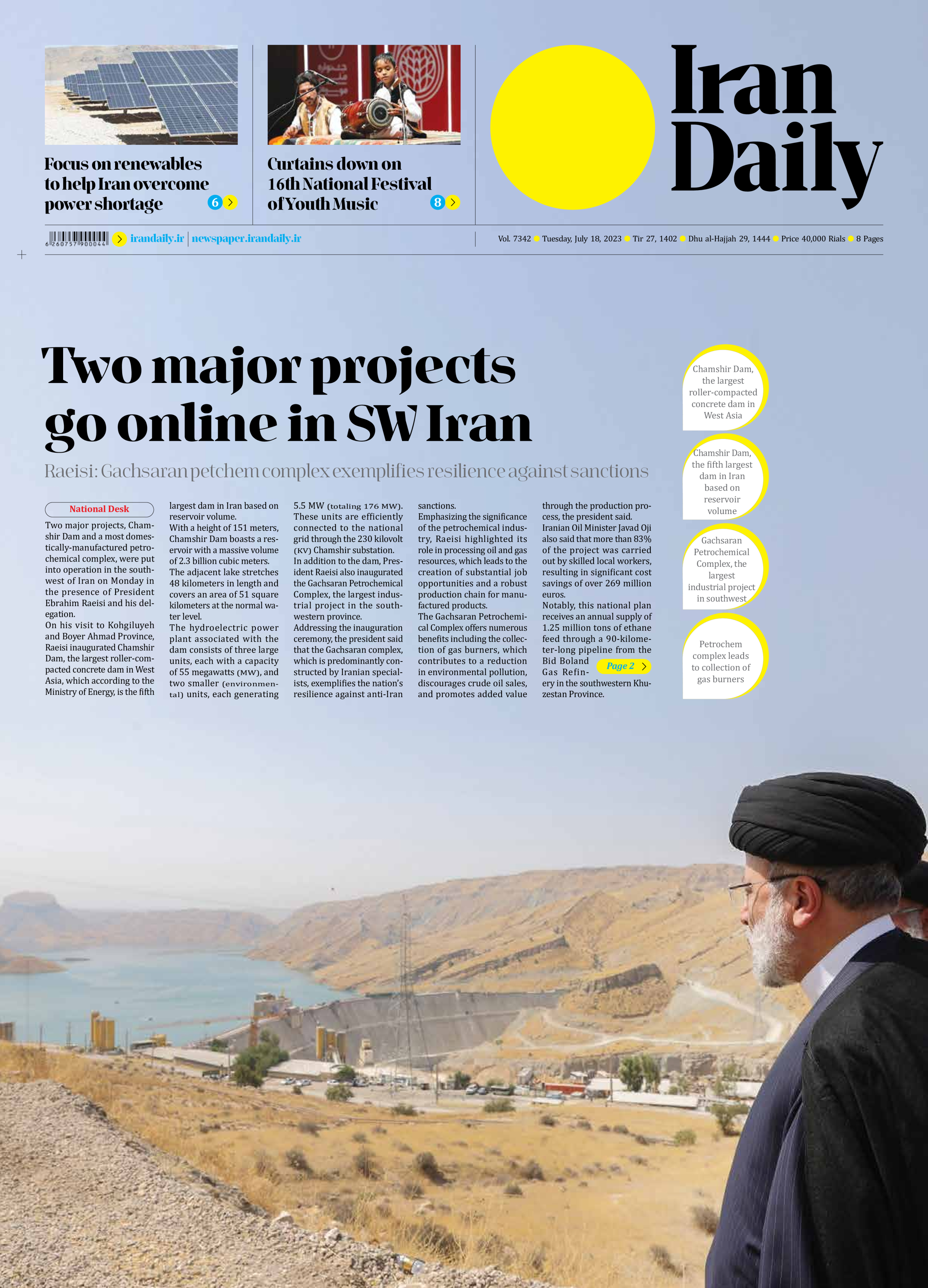
Two major projects go online in SW Iran
Raeisi: Gachsaran petchem complex exemplifies resilience against sanctions
Two major projects, Chamshir Dam and a most domestically-manufactured petrochemical complex, were put into operation in the southwest of Iran on Monday in the presence of President Ebrahim Raeisi and his delegation.
On his visit to Kohgiluyeh and Boyer Ahmad Province, Raeisi inaugurated Chamshir Dam, the largest roller-compacted concrete dam in West Asia, which according to the Ministry of Energy, is the fifth largest dam in Iran based on reservoir volume.
With a height of 151 meters, Chamshir Dam boasts a reservoir with a massive volume of 2.3 billion cubic meters.
The adjacent lake stretches 48 kilometers in length and covers an area of 51 square kilometers at the normal water level.
The hydroelectric power plant associated with the dam consists of three large units, each with a capacity of 55 megawatts (MW), and two smaller (environmental) units, each generating 5.5 MW (totaling 176 MW). These units are efficiently connected to the national grid through the 230 kilovolt (KV) Chamshir substation.
In addition to the dam, President Raeisi also inaugurated the Gachsaran Petrochemical Complex, the largest industrial project in the southwestern province.
Addressing the inauguration ceremony, the president said that the Gachsaran complex, which is predominantly constructed by Iranian specialists, exemplifies the nation’s resilience against anti-Iran sanctions.
Emphasizing the significance of the petrochemical industry, Raeisi highlighted its role in processing oil and gas resources, which leads to the creation of substantial job opportunities and a robust production chain for manufactured products.
The Gachsaran Petrochemical Complex offers numerous benefits including the collection of gas burners, which contributes to a reduction in environmental pollution, discourages crude oil sales, and promotes added value through the production process, the president said.
Iranian Oil Minister Javad Oji also said that more than 83% of the project was carried out by skilled local workers, resulting in significant cost savings of over 269 million euros.
Notably, this national plan receives an annual supply of 1.25 million tons of ethane feed through a 90-kilometer-long pipeline from the Bid Boland Gas Refinery in the southwestern Khuzestan Province.
The petrochemical industry holds a vital role in Iran’s non-oil economy, with petrochemical exports serving as the country’s second-largest revenue source after crude oil. Currently, petrochemical exports constitute nearly 33% of Iran’s non-oil export
earnings.
The president also visited the nomadic area of Saqaveh Plain and was warmly welcomed by the nomads of the
province.







